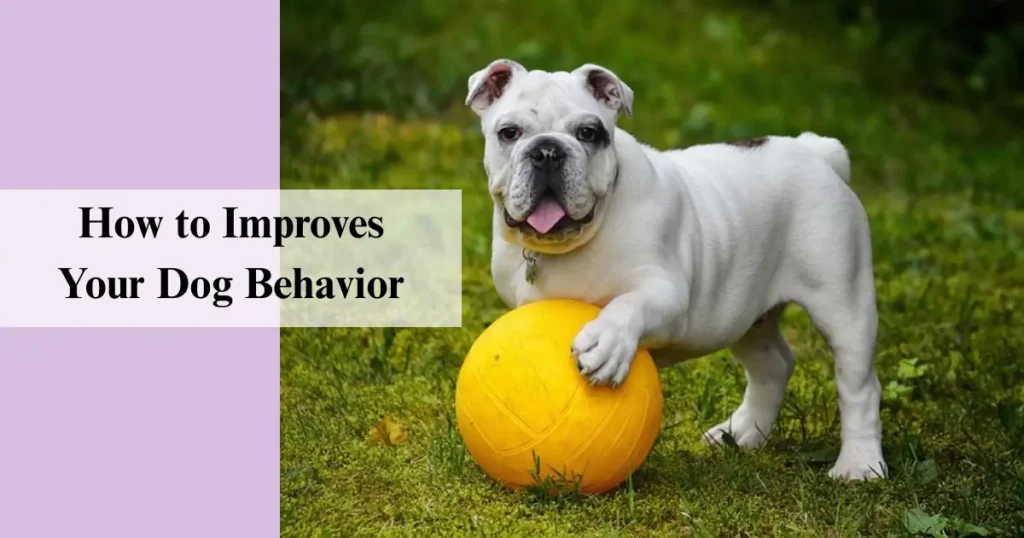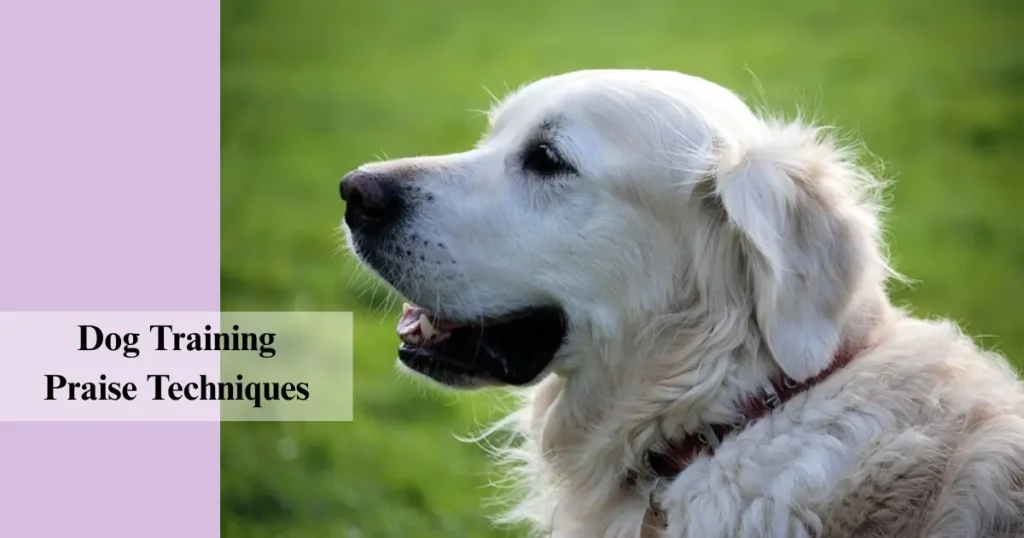Training your dog can be simple and enjoyable, without the need for stress or complexity. One of the most effective tools at your disposal is Verbal and Physical Praise in Dog Training. Whether you are working with a playful puppy or a stubborn adult dog, how you praise them plays a key role in shaping their behavior. Correct use of verbal and physical praise not only strengthens your bond but also fosters positive habits. In this guide, you will learn how to praise a dog correctly with expert-approved techniques based on positive reinforcement, helping you build a stronger connection and encourage lasting obedience.

Why Praise Works: The Psychology Behind It
Dogs thrive on positive feedback. When your dog does something right and you praise them—through your voice, touch, or even a treat—you create a mental reward loop. That behavior becomes associated with good feelings. Over time, your dog will naturally want to repeat those actions because they are tied to something pleasant.
This is the foundation of positive reinforcement dog training, a science-based method that emphasizes rewarding good behavior instead of punishing unwanted actions. Unlike punishment-based techniques, positive reinforcement encourages your dog to make the right choices independently. They don’t obey out of fear—they do it because they feel safe, happy, and understood.
Praise is a powerful motivator. When given at the right time and in the right way, it acts as an emotional reward, giving your dog confidence and clarity. It lets them know: “You got it! Do it again!”
The Role of Verbal and Physical Praise in Dog Training
Verbal and physical praise is more than just a feel-good moment—it’s a fundamental part of how we communicate with our dogs. Dogs may not speak our language, but they are extremely sensitive to tone, energy, and emotion. Your voice and your touch become a bridge between your intentions and their understanding.
Verbal praise might be as easy as saying “good boy” or “yes!” to show approval.—But the real difference lies in how you say it. A cheerful, upbeat tone shows clear approval, while a flat or monotone voice might confuse or discourage your dog. Always match your words with warmth and enthusiasm—this tells your dog they have done something worth celebrating.
Physical praise, on the other hand, involves touch—like a gentle pat, a belly rub, or a scratch behind the ears. Dogs are inherently social creatures, and physical affection aligns with their natural instincts for bonding and seeking reassurance. When combined with verbal cues, this approach becomes a strong reinforcement tool.
Used together, verbal and physical praise help you reinforce the behaviors you want while also strengthening your emotional connection. Think of it as a form of feedback that your dog craves and understands on a deep, instinctual level.
How to Praise a Dog Correctly: Timing, Technique, and Balance
Mastering the art of praise in dog training can significantly improve how your dog learns and responds. Praise seems simple, but doing it correctly is what sets effective trainers apart from the rest. It’s not just what you say—it’s when, how, and how often you say it that makes a difference.
Dogs live in the moment. That’s why the timing of your praise is crucial. Too soon, and they may not have completed the behavior. Too late, and they might associate your praise with the wrong action. Learning to deliver praise with perfect timing helps reinforce good behaviors and eliminates confusion.
1. The Golden Rule: Praise Immediately
The number one rule of dog training praise is this: Praise the moment your dog does the right thing. If your dog sits when asked, your praise should come as soon as their rear touches the ground. Waiting even a few seconds could mean your dog thinks they’re being praised for something else—like standing up or barking.
Immediate praise helps your dog make a clear mental connection: “When I do this, something good happens.” That’s the foundation of positive reinforcement dog training and a big reason why it’s so effective.
2. Pair Verbal and Physical Praise for Maximum Impact
Using verbal and physical praise together creates a multi-sensory reward experience for your dog. When you say something like “Good girl!” while gently petting her chest or scratching behind her ears, you engage both her auditory and physical senses.
This combination reinforces your message on multiple levels. Your voice conveys happiness and approval, while your touch adds warmth and bonding. Over time, your dog begins to recognize both your words and your affectionate gestures as signs of a job well done.
3. Balance is Key
While praise is powerful, too much of it—or using it at the wrong time—can lead to confusion or even overexcitement. Here are three golden rules to ensure your praise remains effective:
- Make sure the praise is earned. Don’t praise randomly—only reward the behaviors you want repeated.
- Keep it relevant to the task. Praise should always be directly tied to a specific behavior.
- Don’t distract your dog. Overpraising during a task can break their concentration and interrupt their focus. Use a calm, controlled voice during working moments, and save the big celebrations for after the job is done.
The key is to be intentional with your praise—using it as a training tool rather than just a casual habit.
Dog Training Praise Techniques You Can Start Using Today

Let’s break down a few expert-approved praise techniques that use a blend of verbal and physical reinforcement to boost your dog’s learning experience. These simple yet strategic methods work for dogs of all ages and training levels.
Technique 1: The Praise Sandwich
- Use: For reinforcing multiple commands.
- How it works: Praise → Give Command → Praise
- Example: “Good sit… stay… good stay!”
This technique uses praise before and after a command to create a supportive training environment. It encourages focus and reinforces the entire sequence of behaviors.
Technique 2: Click-and-Praise
- Use: For shaping precise behaviors or during obedience training.
- How it works: Use a clicker or marker word (like “Yes!”) immediately followed by praise and a reward.
- Example: Dog heels → Click! → “Good heel!” + pat on the shoulder.
This method builds clarity and quick response time. The click or marker serves as a bridge, clearly signaling to your dog which specific behavior earned the reward.
Technique 3: Praise-Only Reinforcement
- Use: When reducing dependency on treats.
- How it works: Gradually replace food rewards with enthusiastic verbal praise and physical affection.
- Example: After a successful fetch return, say “Good fetch!” while gently ruffling their ears or giving a quick belly rub.
This helps your dog shift focus from food to emotional rewards, promoting deeper bonding and intrinsic motivation.
Technique 4: Praise + Play
- Use: For high-energy dogs or breeds that thrive on stimulation.
- How it works: Pair praise with a quick play session or their favorite toy for added reinforcement.
- Example: Once your dog masters a trick, say “Good job!” and kick-off a quickgame of tug or throw their favorite toy.
This reinforces training with fun and excitement, giving your dog something to look forward to every time they succeed.
When praise is well-timed, appropriate, and consistent, it becomes one of the most powerful tools in your dog training toolkit. By using verbal and physical praise correctly, you’ll not only improve your dog’s behavior—you will build a relationship based on trust, respect, and love.
Real-Life Applications: When to Use Praise in Everyday Training
Praise isn’t just for structured training sessions—it belongs in your daily routine. By knowing when and how to praise your dog in real-life situations, you build habits that last a lifetime. Let’s look at some everyday training moments where verbal and physical praise can truly shine.
- House training: As soon as your dog finishes going potty outside, praise enthusiastically. Say “Good potty!” and offer a gentle rub or treat. This helps them connect the outdoors with a positive reward.
- Leash training: When your dog walks calmly beside you instead of pulling, use verbal praise like “Nice walking!” and give a soft pat. This reinforces good leash manners.
- Recall training: The moment your dog comes to you when called, shower them with excited praise and affection. “Yes! Good come!” paired with hugs or a short play reinforces the importance of coming when called.
- Greeting visitors: If your dog remains calm instead of jumping or barking when guests arrive, quietly praise and offer a chest scratch. Calm praise helps anchor their self-control.
- Handling fear or anxiety: During stressful moments like vet visits or thunderstorms, soft verbal praise and reassuring touches can comfort your dog and reduce stress, reinforcing their trust in you.
These small, consistent moments build your dog’s confidence, trust, and motivation. Over time, your dog starts to seek your approval naturally and becomes more responsive even in challenging environments.
Common Mistakes to Avoid with Praise
Even well-meaning praise can backfire if not used correctly. Avoiding these common mistakes can help you stay on track with positive reinforcement dog training.
- Praising bad behavior: If your dog jumps up to greet you and you say “Good boy!” or laugh, they may interpret that as encouragement. Always wait for the behavior you do want—like sitting—and praise that instead.
- Inconsistent tone or timing: If your tone is unclear or praise is delayed, your dog may get confused. Make your praise enthusiastic and immediate, so it reinforces the right behavior every time.
- Over-praising: Frequent praise without clear expectations can lessen its effectiveness. If you say “good dog” all day long without connecting it to behavior, your dog might tune it out.
- Using praise instead of correction: Praise is a reward, not a substitute for guidance. If your dog misbehaves, gently redirect or correct first—then reward when they respond correctly. Praise is most effective when given immediately after the desired behavior.
Avoiding these pitfalls ensures that your dog always knows what’s expected—and what actions will earn your love and approval.
How Verbal and Physical Praise Builds Long-Term Good Behavior
The long-term benefits of using verbal and physical praise in dog training are both emotional and behavioral. Over time, praise becomes more than just a reward—it becomes a source of emotional security and clear communication.
Here’s what consistent praise leads to:
✅ More confident dogs who feel secure in their environment
✅ Stronger bonds between you and your furry companion
✅ Fewer behavior problems due to clear expectations
✅ Better training results, both at home and in public
✅ Happier dogs who love to learn and work with you
Instead of training based on fear or dominance, praise-based training fosters mutual trust, emotional well-being, and cooperation. It’s a sustainable, kind, and deeply effective way to raise a well-behaved dog who genuinely enjoys being around you.
Final Thoughts: Let Your Praise Speak Louder Than Commands
Training your dog doesn’t have to feel like a challenge—it can be a joyful process filled with communication, connection, and compassion. Verbal and Physical Praise in Dog Training transforms simple actions into bonding moments, and routines into lasting habits.
The next time your dog gets something right—whether it’s sitting, staying calm, or simply trying their best—don’t hold back your praise. Your kind words and loving touch may be the fuel they need to keep learning, growing, and thriving. Because at the heart of every well-trained dog is not just obedience—but a strong, loving relationship built one “Good dog!” at a time.











